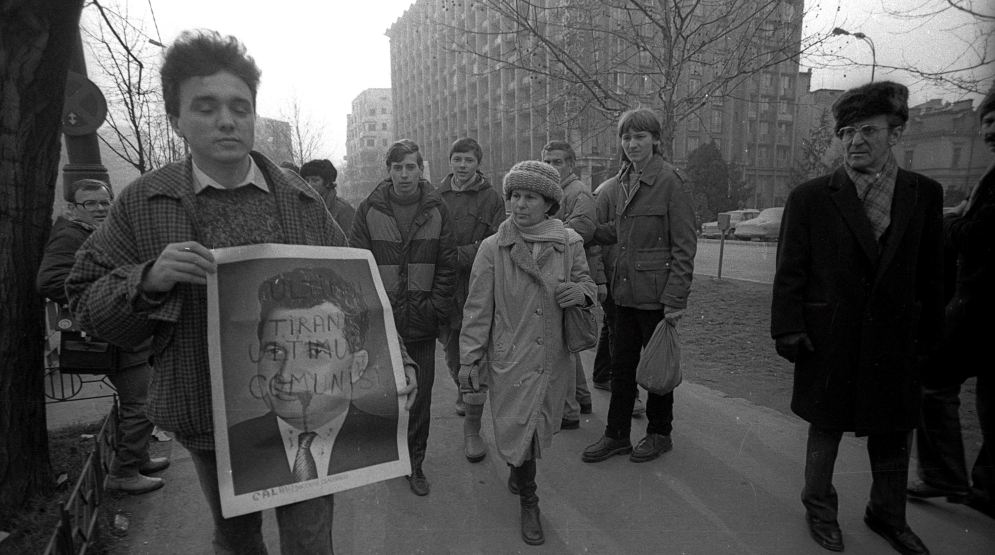After a brief show trial, Romanian dictator Nicolae Ceausescu and his wife Elena were summarily executed on December 25, 1989. The execution resulted in the demise of one of the last Stalinist administrations to emerge in Eastern Europe following WWII. Learn more about WWII here.
The fall of governments in Poland, Czechoslovakia, Hungary, and the German Democratic Republic, now East Germany, preceded Ceausescu’s downfall in 1989. However, whereas events in these nations are frequently misrepresented as genuine popular revolutions, this is not conceivable in Romania. Even the most ardent supporters of radical change at the time had to accept that Stalinism’s downfall featured elements of a coup. This is one of the top political events of the 80s.
Background
The nature of the transition in Eastern Europe 20 years ago was far more visible in Romania than elsewhere. The Stalinist elite used the populist uprisings to consolidate their power and privileges on a new, capitalist basis. Ceausescu was removed from his ruling structure, whose members still wield power and riches in Romania, even though the Romanian people live in poverty.
Ceausescu was considered a “reformer” and a chosen partner of the West when he gained leadership of the Communist Party of Romania or PCR in 1965. He emphasized the country’s independence while putting distance between himself and Moscow. President Richard Nixon of the United States paid a visit to Romania in August 1969, and Ceausescu followed suit the following year. He was also popular in Romania, thanks to industrialization, which resulted in increased living standards.
As the situation worsened, Ceausescu established a weird personality cult, similar to the Maoists in China, and his control became increasingly reliant on the notorious secret police, the Securitate. His dictatorship came to an end when the economy began to deteriorate in the late 1980s.
Romania’s outstanding loans to the International Monetary Fund and the World Bank, totaling roughly $11 billion, were squeezing the population cruelly by the ruling PCR. Food was scarce, and even bread required a ration voucher to obtain. Wages were either slashed or not paid at all. The healthcare and education systems had both failed. Over ten years, productivity in industry and agriculture declined by more than 30 percent due to a lack of investment.
The regime brutally suppressed workers’ demonstrations against this strategy. The Securitate wielded immense power. Hundreds of people were detained, kidnapped, tortured, and murdered.
If you want to visit Europe, here are the 4 Tips for a European Winter Road Trip.
The Downfall
When the government attempted to deport dissident preacher Laszlo Tokes from Timisoara on December 16, 1989, protests erupted quickly, resulting in fights with the police. On Ceausescu’s orders, the police, army, and intelligence service opened fire on the protesters the next day. A large number of protestors were slain.
Protests have already extended to other places, including Bucharest, Romania’s capital. Many observers believe that some aspects of the apparatus, particularly the Securitate, purposefully aided the protests.
Ceausescu spoke to a large crowd in Bucharest on December 21. The previously cordial atmosphere quickly shifted against him. He and his wife left the following day in the face of a new large demonstration, flying north to Targoviste by helicopter, apprehending them by the army.
Ceausescu and his wife were rushed before a military trial, where they were sentenced to death and shot in front of the cameras. The photographs were seen all across the world.
They set out to deconstruct state enterprises, banking on public hostility to the traditional power structures. More than 600 people were arrested by the army on suspicion of terrorist attacks between December 22 and December 28, 1989, and were freed in early January 1990. Many top officers from the military, the Securitate, and the militia who ordered the shootings against demonstrators are still at large or have even been promoted.
In the shadow of Gheorghiu-Dej, Ceausescu began his ascension. Romanian politics assumed a nationalist and anti-Semitic hue after Stalin’s death in 1953 and after Ceausescu came to power in 1965. Minorities were purposefully discriminated against to divide the people. Pro-government newspapers openly promoted Holocaust denial.
Since Ceausescu’s overthrow, Romania’s governments and heads of state have alternated between right-wing and post-Stalinist “Socialist” parties. However, the policy has mostly stayed unchanged. Intensive austerity measures were implemented to meet the criteria for joining the European Union. The remainder of the state-owned businesses was sold off.
Death of Ceausescu
With the orders of the National Salvation Front, Romania’s temporary government, the couple were tried before a court gathered in a small room on Christmas Day, December 25, 1989. They were charged with unlawful wealth amassing and genocide. Ceaușescu frequently contested the court’s jurisdiction over him, claiming that he was the President of Romania constitutionally. The couple was found guilty and sentenced to death after the trial. At the time, a soldier on duty was told to take the Ceaușescus out the back and shoot them one by one, but the Ceaușescus insisted on dying together.
Aftermath
No one has lived up to the promises of riches and democracy. All politicians agree that the general public should bear the brunt of the crisis and significant social attacks.
At the same time, as the recent presidential elections have shown, the country’s elections are far from democratic. Within the political elite, a heated war for power, influence, and financial resources are waging.
According to recent studies, one out of every three people now believes the events of 1989 were an error. Sixty percent of Romanians believe politicians are more corrupt today than they were under Nicolae Ceausescu, and roughly the same percentage (56 percent) believe the “communist” administration treated regular citizens better than the present political system. You may also read the top political scandals of all time here.
